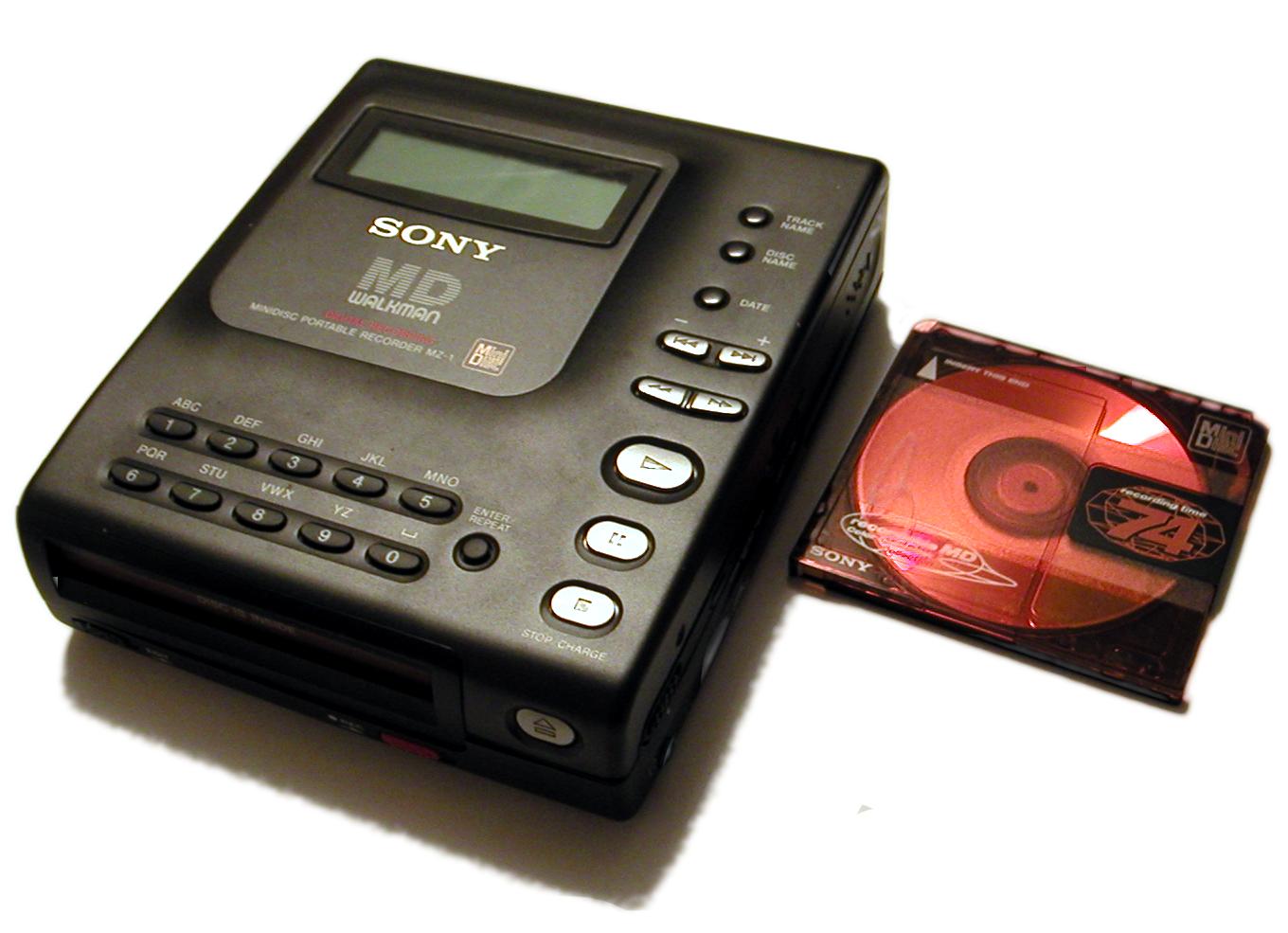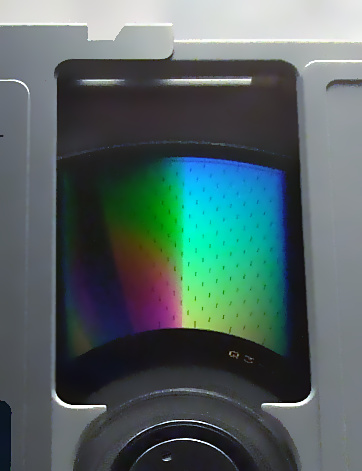|
Minidisc
MiniDisc (MD) is an erasable magneto-optical disc-based data storage format offering a capacity of 60, 74, or 80 minutes of digitized audio. Sony announced the MiniDisc in September 1992 and released it in November of that year for sale in Japan and in December in Europe, North America, and other countries. The music format was based on ATRAC audio data compression, Sony's own proprietary compression code. Its successor, Hi-MD, would later introduce the option of linear PCM digital recording to meet audio quality comparable to that of a compact disc. MiniDiscs were very popular in Japan and found moderate success in Europe. Although it was designed to succeed the cassette tape, it did not manage to supplant it globally. By March 2011, Sony had sold 22 million MD players, but discontinued further development. Sony ceased manufacturing and sold the last of the players by March 2013. On January 23, 2025, Sony announced they would end the production of recordable MD media ... [...More Info...] [...Related Items...] OR: [Wikipedia] [Google] [Baidu] |
ATRAC
Adaptive Transform Acoustic Coding (ATRAC) is a family of proprietary audio compression algorithms developed by Sony. MiniDisc was the first commercial product to incorporate ATRAC, in 1992. ATRAC allowed a relatively small disc like MiniDisc to have the same running time as a CD while storing audio information with minimal perceptible loss in quality. Improvements to the codec in the form of ATRAC3, ATRAC3plus, and ATRAC Advanced Lossless followed in 1999, 2002, and 2006 respectively. Files in ATRAC3 format originally had the extension; however, in most cases, the files would be stored in an OpenMG Audio container using the extension . Previously, files that were encrypted with OpenMG had the extension, which was replaced by starting in SonicStage v2.1. Encryption is no longer compulsory as of v3.2. Other MiniDisc manufacturers such as Sharp and Panasonic also implemented their own versions of the ATRAC codec. History ATRAC was developed for Sony's MiniDisc format. ATR ... [...More Info...] [...Related Items...] OR: [Wikipedia] [Google] [Baidu] |
Magneto-optical
A magneto-optical drive is a kind of optical disc drive capable of writing and rewriting data upon a magneto-optical disc. 130 mm (5.25 in) and 90 mm (3.5 in) discs are the most common sizes. In 1983, just a year after the introduction of the compact disc, Kees Schouhamer Immink and Joseph Braat presented the first experiments with erasable magneto-optical compact discs during the 73rd AES Convention in Eindhoven. The technology was introduced commercially in 1985. Although optical, they normally appear as hard disk drives to an operating system and can be formatted with any file system. Magneto-optical drives were common in some countries, such as Japan, but have fallen into disuse. Overview Early drives are 130 mm and have the size of full-height 130 mm hard-drives (like in the IBM PC XT). 130 mm media looks similar to a CD-ROM enclosed in an old-style caddy, while 90 mm media is about the size of a regular 3-inch floppy di ... [...More Info...] [...Related Items...] OR: [Wikipedia] [Google] [Baidu] |
Digital Compact Cassette
Digital Compact Cassette (DCC) is a magnetic tape sound recording format introduced by Philips and Matsushita Electric in late 1992 and marketed as the successor to the standard analog Compact Cassette. It was also a direct competitor to Sony's MiniDisc (MD), but neither format toppled the then-ubiquitous analog cassette despite their technical superiority, and DCC was discontinued in October 1996. Another competing format, the Digital Audio Tape (DAT), had by 1992 also failed to sell in large quantities to consumers, although it was popular as a professional digital audio storage format. The DCC form factor is similar to the analog compact cassette (CC), and DCC recorders and players can play back either type: analog as well as DCC. This backward compatibility was intended to allow users to adopt digital recording without rendering their existing tape collections obsolete, but because DCC recorders couldn't record (only play back) analog cassettes, it effectively forced con ... [...More Info...] [...Related Items...] OR: [Wikipedia] [Google] [Baidu] |

